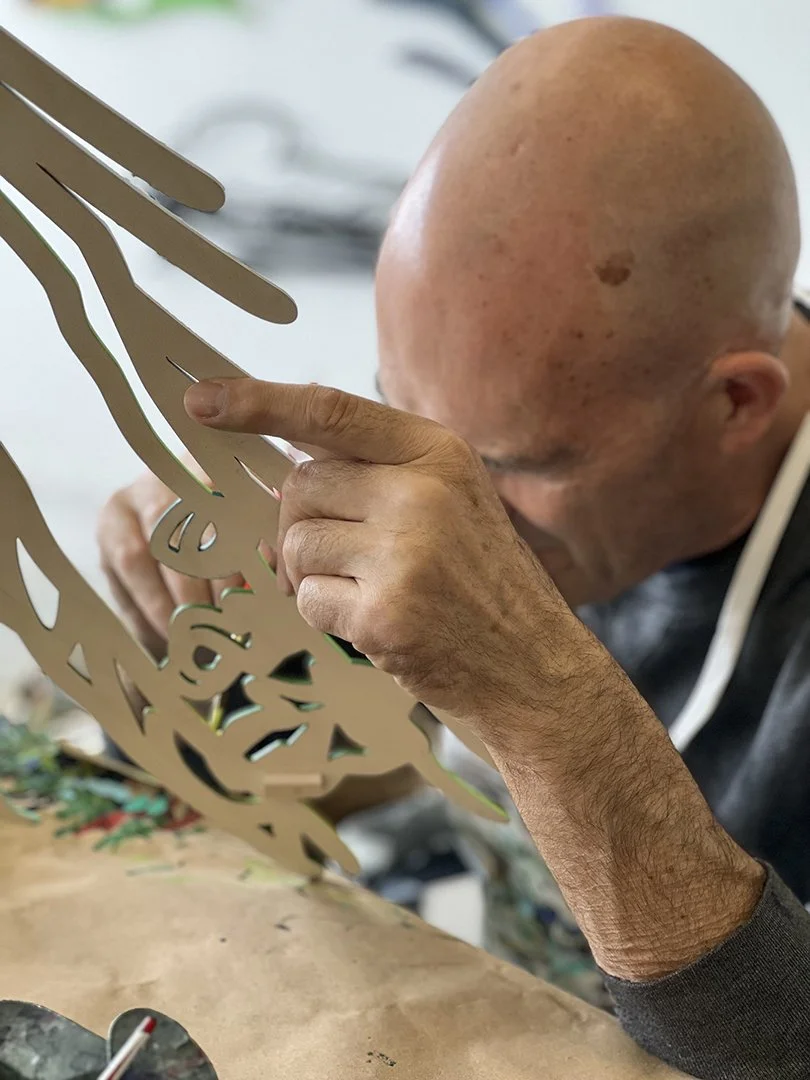“What the heck is an Archetypal Landscape, anyway?”
During the COVID lockdown of 2020, I began rethinking my approach to the landscape. Whereas previously, I’d used reference photos taken on locations a basis for my landscape paintings, I now decided to rely more on memory and imagination. It was a conscious decision to pare down the landscape even further than I had before, to arrive at a simpler, more lyrical interpretation of nature. Like a distant memory, or half forgotten dream, these images in their graphic simplicity represented for me, symbolic references or archetypes of the natural world. Hence the name, “Archetypal Landscapes”.
When the pandemic started, like many, I decided to hunker down. Rather than venturing across the river to my studio in Cincinnati, I set up a small workspace in my apartment and began creating dozens of sketches and small drawings in permanent marker in an effort to flesh out this new direction. On the whole, the drawings possessed a simplicity and quirkiness that I don’t normally allow for in my creative process. In many ways, it was like meditation: the process of getting the ego out of the way, relinquishing control and surrendering to intuition.
Soon thereafter, I returned to the drawings and began adding color to them with acrylic, watercolor and gouache. While I enjoyed the delightful linear simplicity of these drawings, the addition of color suddenly added a compelling vibrancy. The goal then became to see how much dimension and atmospheric mood could be achieved by relying solely on line quality and solid fields of color. I was astonished at the visual impact imparted by these little gems. By summer’s end, I’d generated nearly 250 “Archetypal Landscape” sketches and drawings ranging in size from 1 x 2” to 10 x 13”.
In early 2021, I returned to the studio eagerly curious to see how well these images would translate to a larger format on canvas. Although I was initially pleased with the iconic look and feel of these new paintings, I soon felt there was still a lot of room left for exploration. It was at this point, I decided to revisit some earlier landscape drawings I’d done on location; simplify, refine and add color to them digitally in Adobe Illustrator, and then create them as laser cutouts.
- Kevin T. Kelly
The Laser Cutout Process
1) The process begins with a quick sketch, usually in permanent marker, in a sketchbook or sketch pad.
2) The sketch is then scanned into the computer and created as a jpeg.
3) The jpeg is imported into Adobe Illustrator and hand rendered or re-drawn as a vector file. The vector format, because it is mathematical, rather than rendered in pixels (like Photoshop files) provides the ability to scale to any size without any loss of information and to provide a plotting path for the laser cutter to follow.
4) The vector file is sent to a vendor who will, using laser technology, digitally cut the image out of furniture grade plywood.
5) If the Cutouts are to be mounted on panels, the panels are ordered and then gessoed and painted with Ronan gloss enamel.
6) Once the Cutouts are received from the laser cutter, they are checked over, lightly sanded if needed, and primer coated with spray gesso.
7) The works are then painted by hand with artist acrylics and affixed to their respective mounting panels.







